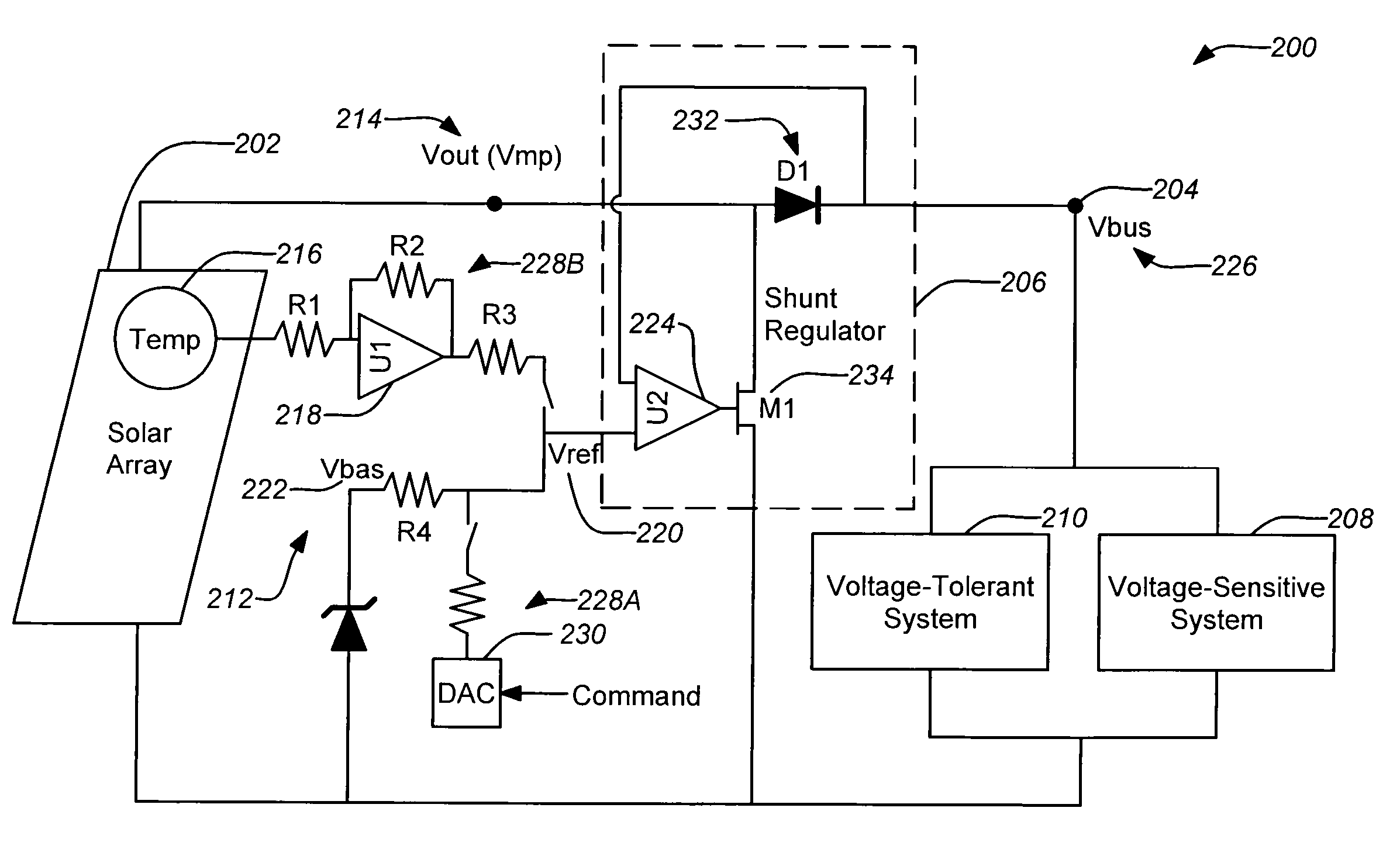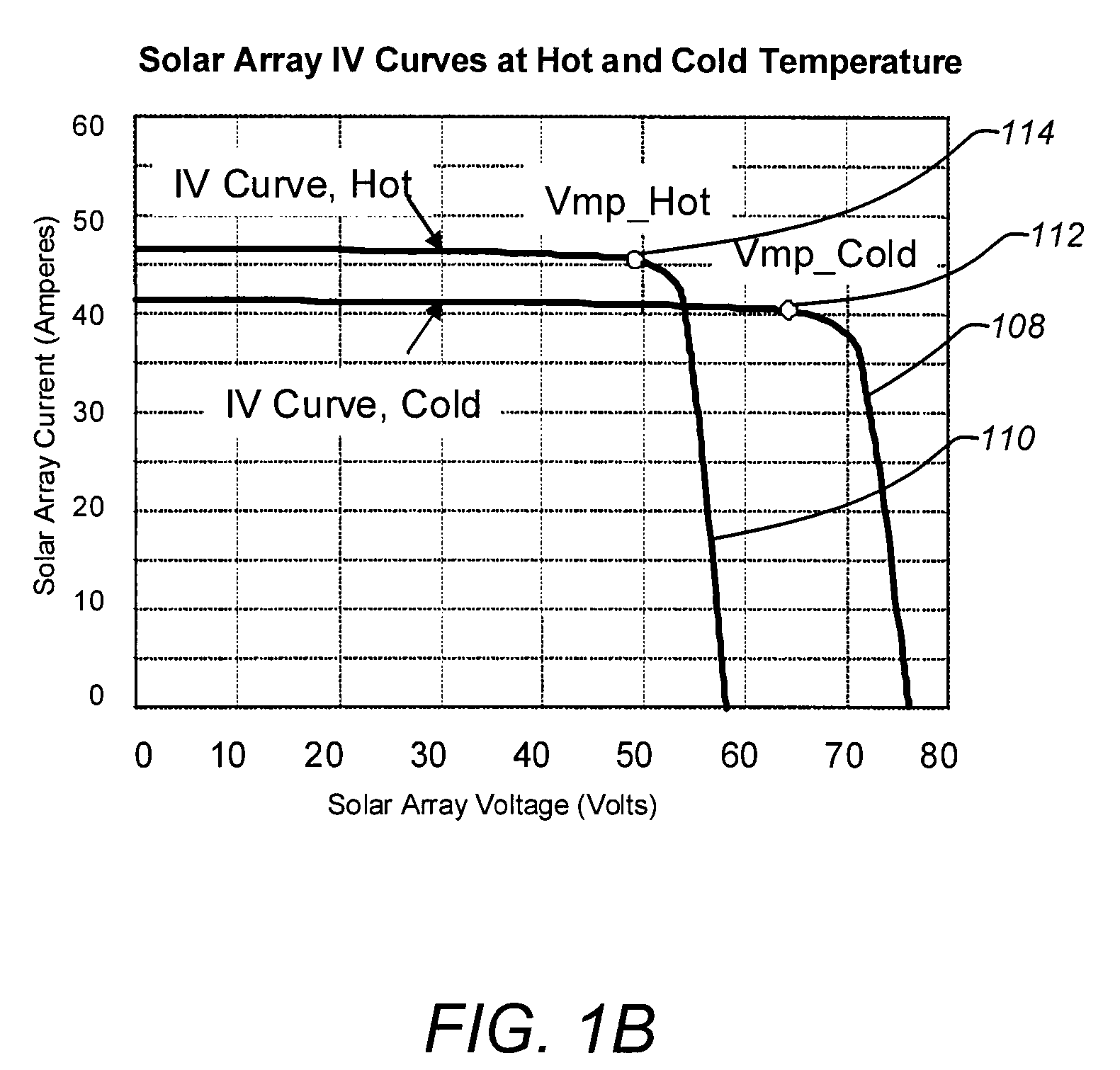Solar array peak power extraction
a solar array and peak power technology, applied in the direction of pv power plants, transportation and packaging,cosmonautic vehicles, etc., can solve the problems of not optimizing the power generation of solar arrays, not being able to extract the maximum solar array power, and not being able to extract peak solar array power from shunt regulators
- Summary
- Abstract
- Description
- Claims
- Application Information
AI Technical Summary
Benefits of technology
Problems solved by technology
Method used
Image
Examples
Embodiment Construction
[0024]1. Overview
[0025]As previously mentioned, embodiments of the disclosure are directed to optimizing power generation of a solar array. Some embodiments of the disclosure can be implemented through a variable and programmable bus voltage for a satellite. The nominal bus voltage may be selected to correspond with the Vmp of the solar array based on the age-based and seasonal performance prediction for the solar array at the nominal operating temperature. The control method can be applied to modify the existing bus voltage regulation providing additional solar array power to the powered electrical systems. A conventional peak power tracker operates the solar array at Vmp, and its output is unregulated. However, Vmp is a function of temperature, illumination, cell characteristics (including aging) shadowing, and other terms and can vary greatly. A conventional peak power tracker either with a second stage DC-DC converter or a battery-on-bus topology previously described is typicall...
PUM
 Login to View More
Login to View More Abstract
Description
Claims
Application Information
 Login to View More
Login to View More - R&D
- Intellectual Property
- Life Sciences
- Materials
- Tech Scout
- Unparalleled Data Quality
- Higher Quality Content
- 60% Fewer Hallucinations
Browse by: Latest US Patents, China's latest patents, Technical Efficacy Thesaurus, Application Domain, Technology Topic, Popular Technical Reports.
© 2025 PatSnap. All rights reserved.Legal|Privacy policy|Modern Slavery Act Transparency Statement|Sitemap|About US| Contact US: help@patsnap.com



